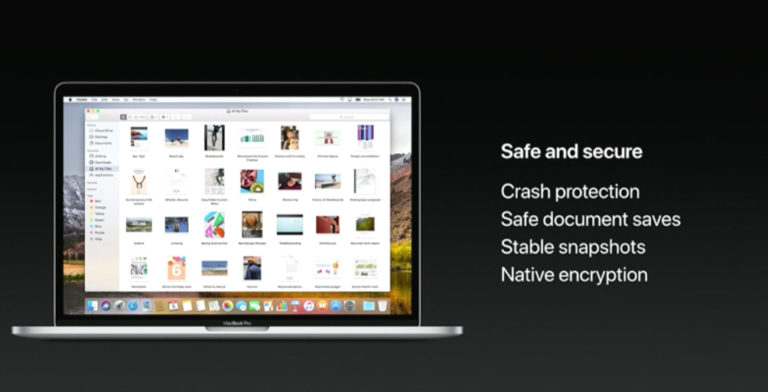

- #Hfs file system mac lba mac os x#
- #Hfs file system mac lba software#
- #Hfs file system mac lba windows 7#
ħ HPFS/NTFS 4e QNX4.x 2nd part 88 Linux plaintext de Dell UtilityĨ AIX 4f QNX4.x 3rd part 8e Linux LVM df BootItĩ AIX bootable 50 OnTrack DM 93 Amoeba e1 DOS accessĪ OS/2 Boot Manag 51 OnTrack DM6 Aux 94 Amoeba BBT e3 DOS R/Oī W95 FAT32 52 CP/M 9f BSD/OS e4 SpeedStorĬ W95 FAT32 (LBA) 53 OnTrack DM6 Aux a0 IBM Thinkpad hi eb BeOS fsĮ W95 FAT16 (LBA) 54 OnTrackDM6 a5 FreeBSD ee GPTį W95 Ext'd (LBA) 55 EZ-Drive a6 OpenBSD ef EFI (FAT-12/16/ġ0 OPUS 56 Golden Bow a7 NeXTSTEP f0 Linux/PA-RISC bġ1 Hidden FAT12 5c Priam Edisk a8 Darwin UFS f1 SpeedStorġ2 Compaq diagnost 61 SpeedStor a9 NetBSD f4 SpeedStorġ4 Hidden FAT16 <3 63 GNU HURD or Sys ab Darwin boot f2 DOS secondaryġ6 Hidden FAT16 64 Novell Netware af HFS / HFS+ fb VMware VMFSġ7 Hidden HPFS/NTF 65 Novell Netware b7 BSDI fs fc VMware VMKCOREġ8 AST SmartSleep 70 DiskSecure Mult b8 BSDI swap fd Linux raid autoġb Hidden W95 FAT3 75 PC/IX bb Boot Wizard hid fe LANstepġc Hidden W95 FAT3 80 Old Minix be Solaris boot ff BBTĪcorn system's 'Advanced Disc Filing System'. Modern linux kernels recognize the following partition type hex codes:Ġ Empty 24 NEC DOS 81 Minix / old Lin bf Solarisġ FAT12 39 Plan 9 82 Linux swap / So c1 DRDOS/sec (FAT-Ģ XENIX root 3c PartitionMagic 83 Linux c4 DRDOS/sec (FAT-ģ XENIX usr 40 Venix 80286 84 OS/2 hidden C: c6 DRDOS/sec (FAT-Ĥ FAT16 <32M 41 PPC PReP Boot 85 Linux extended c7 Syrinxĥ Extended 42 SFS 86 NTFS volume set da Non-FS dataĦ FAT16 4d QNX4.x 87 NTFS volume set db CP/M / CTOS /.

(FAQ at above site, not updated since 2000).How it does this, and what limits and features it has, depends on the particular file system in use.
#Hfs file system mac lba software#
So in summary a file system is a piece of software that stores data on and retrieves data from a physical storage medium. To later retrieve the file, the file system will consult it's index or table to get a list and order of the blocks that contain the appropriate data and then go and collect the contents of those blocks and rebuild the file. When a file system stores a file, it determines how many blocks will be needed to store the file, splits the file's data into the appropriate number of pieces and writes them to the various blocks and records in an index or table what blocks contain the parts of the file and in what order they were saved in. For example, a file system may create 2,048 byte blocks made up of four 512 bytes sectors on a hard drive's physical platter. A file system logically "collects" one or more of these sectors into an addressable ' block'. Most (all?) storage devices use ' sectors' which are small addressable units of space on their medium that actually store the binary data that makes up a file. It determines how files and directories are stored, retrieved, sorted, protected and recovered. Until then, you've been warned.Ī file system is a logical way of storing data on a storage medium. DO NOT USE THIS AS AN AUTHORITATIVE DOCUMENT! This warning will be removed only when the author(s) feel the document is as accurate as possible. It is far from complete, and almost certainly contains errors, omissions and mistakes. Here is the output from the partition inspector after win7 is removed.This is currently a living document. In addition I went into rEFIT console and ran the command gptsync.

I am really at a loss? When I re-installed Fedora I made sure grub was installed in /dev/sda4 not at /dev/sda. Now I have OS X and Fedora 15 only and the system still does not boot Fedora. Listed in GPT as partition 5, type EFI System (FAT) Listed in MBR as partition 4, type 07 NTFS/HPFS, active Listed in GPT as partition 4, type Basic Data

#Hfs file system mac lba mac os x#
Listed in MBR as partition 3, type ab Mac OS X Boot Listed in GPT as partition 3, type Mac OS X Boot Listed in MBR as partition 2, type af Mac OS X HFS+ Listed in GPT as partition 2, type Mac OS X HFS+ Listed in GPT as partition 1, type EFI System (FAT) Here is the output for the partition inspector:īoot Code: None (Non-system disk message)
#Hfs file system mac lba windows 7#
The refit windows icon boots windows 7 as expected and refit OS X boots OS X. My symptoms are that the Linux icon on boot from refit boots windows. Any advice or helpful hints would be great. In each case two of the three operating systems work fine but I can't get LFedora 15 to boot no matter how many times I reinstall. I am using the latest version of refit 0.14. I must be missing something but I have spent hours and never seem to get it to work. It seems no matter what I do I can't get the triple boot to work, I have tried in the past on a white Macbook and now I am trying on a Mac Book Air.


 0 kommentar(er)
0 kommentar(er)
